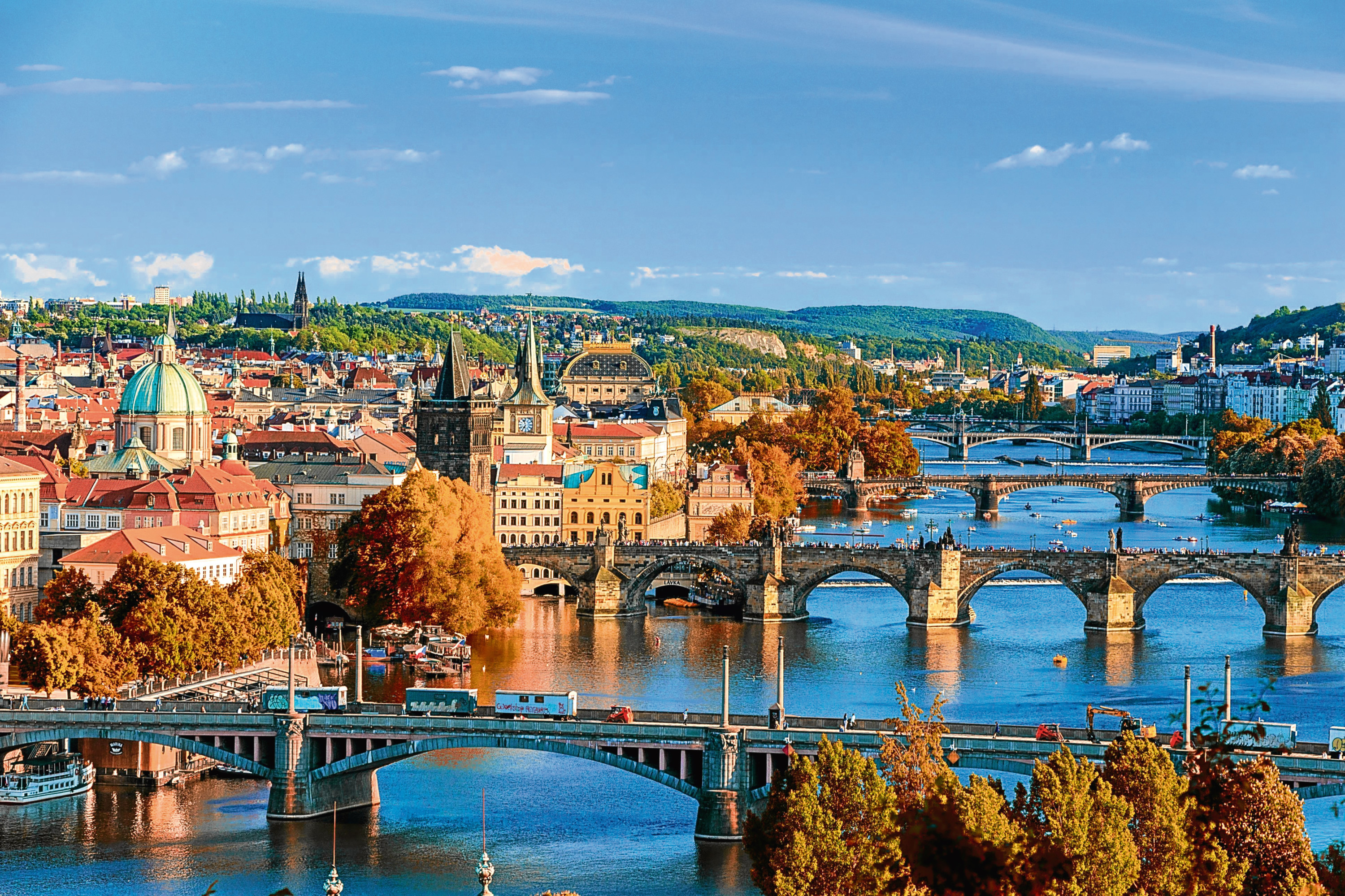
Some cities are at their best in Spring. Prague is one of them.
There is no better time to stroll the Czech capital’s medieval and baroque streets than at this time of year as the snows melt, the flowers burst alive and the pavement café tables emerge back out in the chocolate-box-pretty old town.
The turbulent Prague Spring in 1968 was a darker affair as Soviet tanks crushed the flowering of democracy taking root in the city. Today Prague, though, is at the head of a confident, independent European nation and is ideal for a city break as it combines the richness and startling beauty of its past, with a practical touch of the efficient modern, which makes spending time here a pleasure.
The centre of Prague today is still very much on the majestic Old Town Square, for me the finest of its kind in all of the old Eastern European states. This expanse of cobbles is blessed on all sides by a stunning collage of baroque and medieval buildings, including the Old Town Square Hall itself and its famous astronomical clock, which draws in the crowds to its hourly shows.
My advice here in spring is to sit awhile in a café and just drink in all the history. The cobbles you rest on are alive with tales of fierce revolutions, mass demonstrations and brutal rebellion. What looks like just another house tucked on the square turns out to be where the famous Czech writer Franz Kafka lived as a boy. In Prague it feels like every single building has its own story to tell.
On the other side of the Vltava River is Prague’s impressive castle, which towers high above the water. It’s worth the steep climb with a ramble of winding streets crammed with cute boutique shops, bars and cafes on the way up from the Malastrana district.
The castle itself dates back as far as the ninth century, but it has been sacked, destroyed and rebuilt on numerous occasions throughout its turbulent history, making it a unique historical cocktail with everything from austere Romanesque through to ornate Gothic influences.
Just by the castle is St Vitus Cathedral, another Prague landmark whose huge twin west spires can be admired from all over the city.
The Vltava River is another unmissable attraction with myriad ways to explore its languorous turns.
You can hop on one of the big tour boats that ferry you along with the accompaniment of guided commentary. I recommend heading for the other end of the scale and hiring a rowing boat on a sunny spring day to glide beneath the picturesque Charles Bridge.
The bridge itself was first built as the Judith Bridge in 1357, but the original was quickly washed away and its replacement given the Charles moniker.
Luckily today’s structure managed to survive 2002’s epic floods intact.
The cobbled stone bridge is lined with the busts of seminal Czechs throughout the ages, from St John of Nopomuk, who was thrown to his death off the bridge, through to St. Luitgard, arguably the finest on the bridge.
When the sightseeing day ends and the sun slips down over the Vltava, Prague really comes into its own.
The Czechs are renowned for being among the world’s greatest beer makers.
In Prague the two main brews, Pilsner Urquell and Budvar, are not only delicious but available all over town for much less than a pint back home.
U Fleku has been brewing its fine dark ale on the premises for 500 years. The emphasis is justifiably on the beer, though the hearty food is delicious too.
Strolling back to your hotel after a spring day wandering the cobbled streets of one of Europe’s most perfectly preserved historic cities, as the moon catches the cobbles across Old Town Square, you will no doubt agree with Kafka that “the dear little mother has sharp claws”. The Czech capital is truly magical, especially during the Prague spring.
Work on St Vitus Cathedral began as far back as 1344 when it was commissioned by Charles IV. It took centuries to build and has many 19th and 20th Century alterations moulded in. Inside lie the Czech crown jewels and the tomb of Good King Wenceslas.

Enjoy the convenience of having The Sunday Post delivered as a digital ePaper straight to your smartphone, tablet or computer.
Subscribe for only £5.49 a month and enjoy all the benefits of the printed paper as a digital replica.
Subscribe